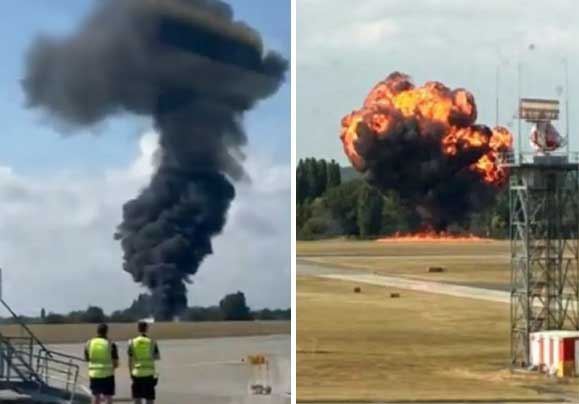Three Plane Crashes in a Month: Alarming Rise in Global Air Incidents
In the span of just one month, the world has witnessed three major plane crashes — one in London and two in India — raising serious concerns over global air safety, especially in the fast-growing aviation sectors of developing countries.
London Southend Crash: A Quiet Takeoff, a Fiery End
On July 13, a Beechcraft B200 Super King Air aircraft operated by Zeusch Aviation crashed shortly after takeoff from London’s Southend Airport. Witnesses described the terrifying moment when the plane tilted mid-air, inverted, and nose-dived into a massive explosion.
All four people onboard died in the incident. Despite a rapid emergency response, the crash left behind only debris and burning wreckage. Initial investigations are focused on possible mechanical failure or critical pilot misjudgment. Here is the plan crashes report.
The aircraft, which was on a medical transport mission to Germany, carried two pilots and two medical professionals — a European doctor and a Chilean nurse — all of whom sadly lost their lives in the incident. Eyewitnesses near the airport reported that the plane appeared unstable shortly after liftoff, abruptly flipped mid-air, and plummeted to the ground in a fiery explosion. Emergency response teams, including local fire services, police, ambulances, and RAF units, arrived quickly at the plane crash site, but there were no survivors. The wreckage has since been moved to Farnborough for examination by the UK’s Air Accidents Investigation Branch (AAIB), which has launched a full investigation into the cause. Although the crash did not result in ground casualties, it has raised serious concerns about flight safety, especially as the aircraft was considered reliable and was on a routine mission. As aviation technology continues to advance, this devastating event is a sobering reminder that system failures or overlooked procedures can still lead to catastrophic outcomes.

Air India Flight 171 Crash – Only One Survivor
On June 12, 2025, tragedy struck when Air India Flight 171, a Boeing 787-8 Dreamliner, crashed shortly after takeoff from Ahmedabad, en route to London. Out of the 242 people onboard, only one passenger survived, while 241 others and 19 people on the ground sadly lost their lives.
The incident shocked the nation and the aviation world, prompting a swift response from authorities. According to preliminary findings by the Aircraft Accident Investigation Bureau (AAIB), both of the aircraft’s engine fuel cutoff switches were unintentionally moved to ‘CUTOFF’ just three seconds after takeoff. As a result, the engines failed simultaneously, leading to the aircraft’s sudden descent.
This catastrophic event serves as a painful reminder of the need for continuous improvements in aviation safety, especially as global travel increases and technology evolves.
Madhya Pradesh Crash – Two Lives Lost
On July 11, a training aircraft from a flight academy in Madhya Pradesh crashed during a routine exercise, killing both the student pilot and instructor. The aircraft reportedly lost power mid-air and crashed in an open field. Eyewitnesses said the plane made strange sounds before losing altitude rapidly.
This marked India’s third aircraft incident in less than 30 days, and the second fatal crash involving a small plane.
Are We Seeing a Pattern? - Plane Crashes
These incidents — across both commercial and training aircraft — hint at a troubling pattern:
- Technical glitches in modern aircraft
- Insufficient maintenance checks in budget airlines
- Overburdened flight training academies
- Lack of early warning or monitoring systems in small aircraft
With aviation expanding fast, especially in emerging countries like India, safety regulations must scale just as fast.
It’s Time For Awareness
Aviation is still among the safest modes of travel — but that doesn’t mean we ignore the red flags. Experts suggest implementing:
- AI-based maintenance prediction systems
- More frequent safety drills for emergency landings
- Mandatory fatigue detection and health monitoring for pilots
- Transparency in flight safety reports for public trust
We can say “Technology may fly the planes, but safety still lies in human hands.”
As the aviation world evolves, passengers and authorities alike must demand higher accountability. Because behind every aircraft number is a life, a family, and a story that deserves to reach home safely.
let’s checkout other edu/tech/latest posts from here.
